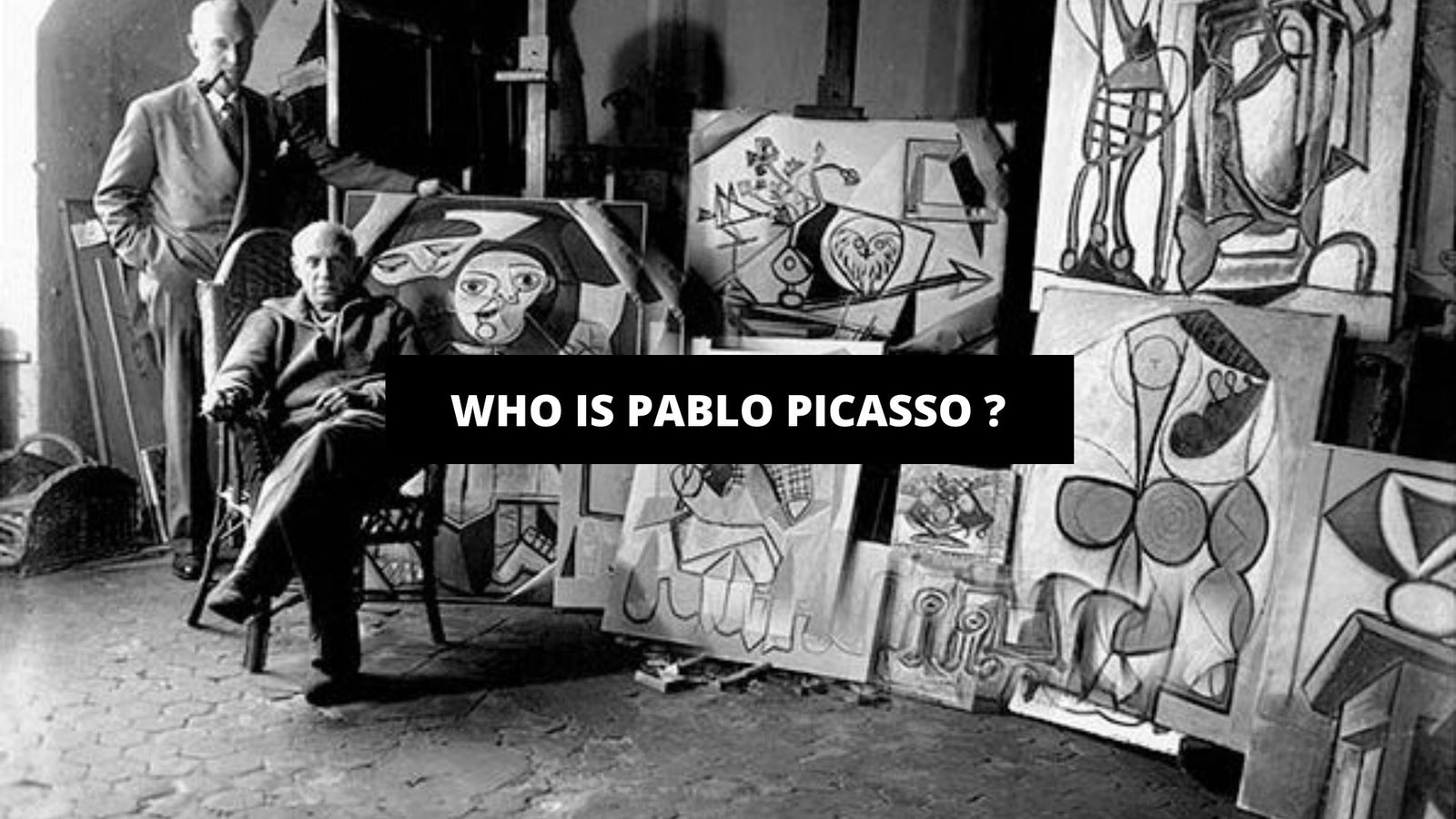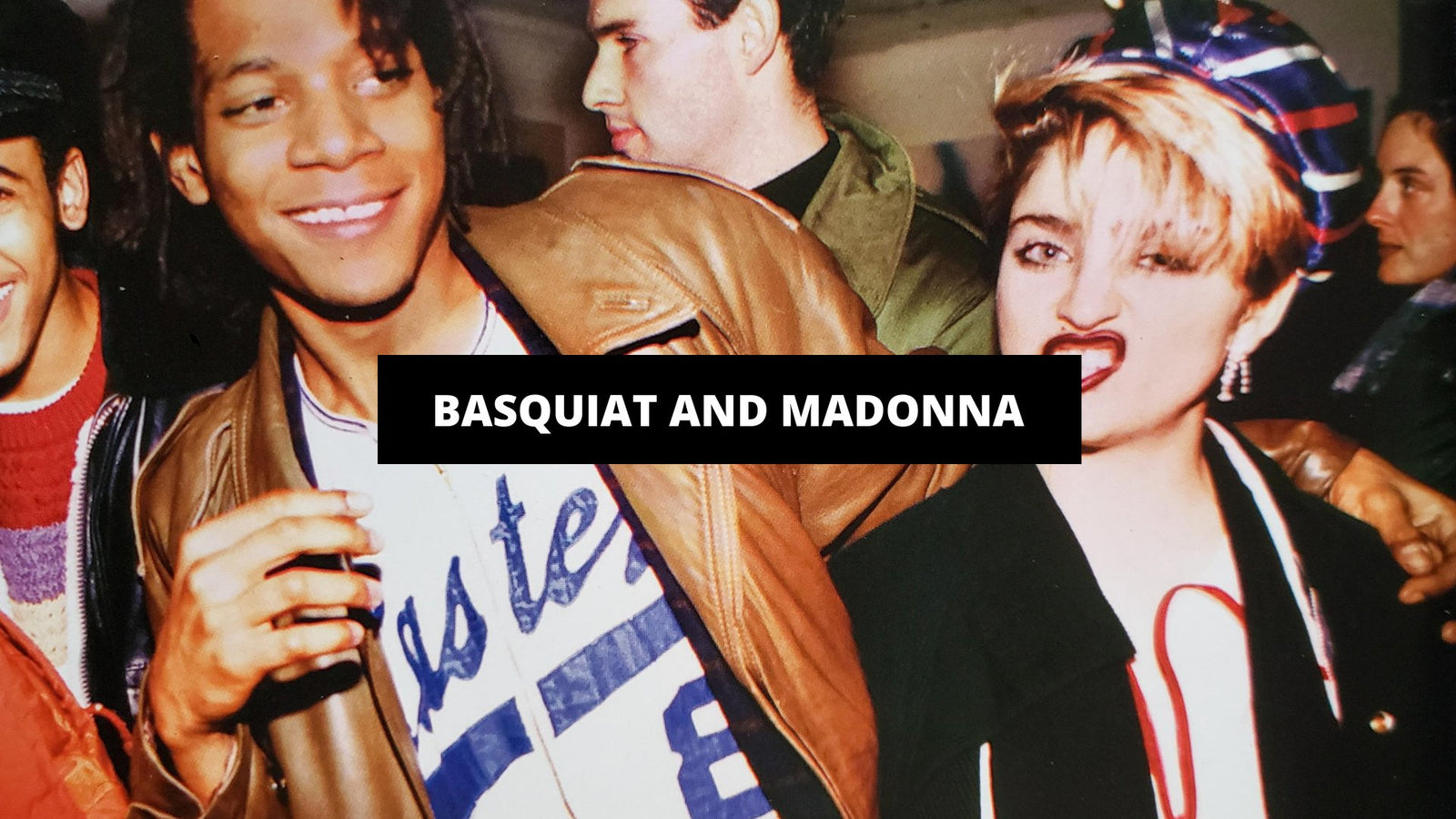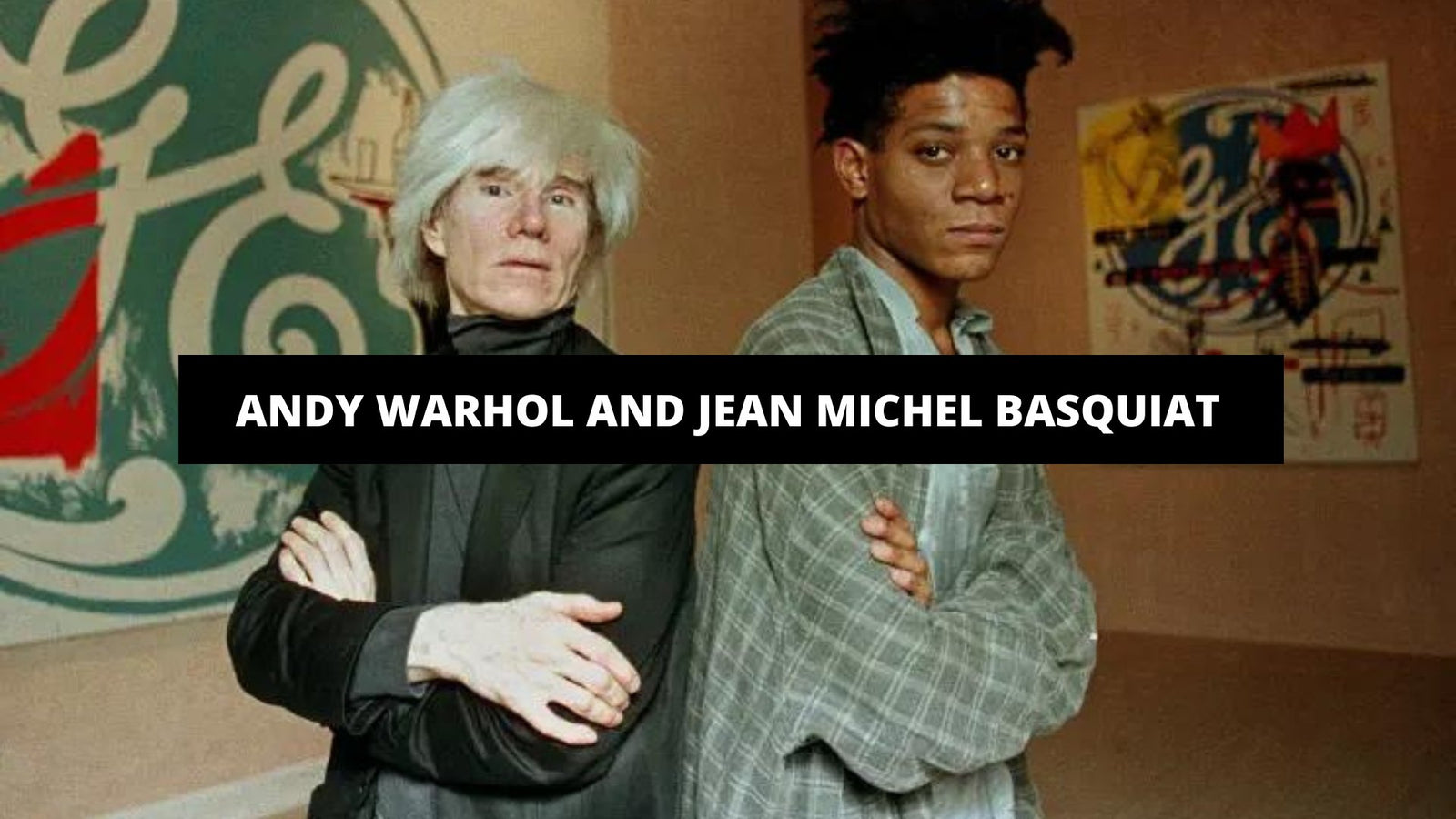Your Cart is Empty
Loading...
🎁BUY 2, GET 1 FREE + FREE WORLDWIDE SHIPPING 🚚
🎁BUY 2, GET 1 FREE + FREE WORLDWIDE SHIPPING 🚚
Who Is Pablo Picasso ?
May 14, 2024 8 min read

Pablo Picasso is widely recognized as one of the most influential artists of the 20th century.
This article explores the various periods of Picasso's work, from his early life and education to his groundbreaking artistic career, including the Blue Period, Rose Period, Cubism, and Surrealism.
Learn about his personal life, relationships, impact on art and culture, controversies, awards, and honors.
Discover the lasting legacy of this iconic artist and find further reading and resources to continue exploring his remarkable contributions to the art world.
Who Was Pablo Picasso?
Pablo Picasso, a Spanish artist born in Malaga, Spain, in 1881, was one of the most influential painters of the 20th century. Renowned for his role in pioneering Cubism alongside Georges Braque, Picasso's diverse body of work includes the Blue Period, characterised by melancholic tones, and the Rose Period, marked by warmer hues. His masterpiece 'Guernica' is a powerful depiction of the horrors of war. Picasso's artistic journey from early influences like African art to embracing Surrealism showcases his versatility and enduring legacy in the art world.
Early in his life, Picasso showed prodigious talent and swiftly developed a unique style that set him apart from his contemporaries. His fascination with the bold geometric shapes found in African art greatly influenced his artistic direction, leading to the development of Cubism.
This groundbreaking movement shattered traditional perspectives and paved the way for future artistic experimentation. Picasso's Blue Period, characterized by somber themes and monochromatic blues, and his Rose Period with its more cheerful and vibrant palette, demonstrate his ability to evoke deep emotions through color and form.
Early Life and Education
Exploring Pablo Picasso's early life and education unveils the roots of his artistic genius and innovative spirit. From his childhood in Spain to his formal artistic training, Picasso's journey shaped his unique perspective and revolutionary approach to art.Childhood and Family Background
Pablo Picasso's childhood in Spain, surrounded by a family of art collectors and creative individuals, laid the foundation for his future artistic brilliance.
Picasso's father, José Ruiz y Blasco, was an art teacher who recognized his son's talent at a young age and encouraged him to explore various artistic styles. Growing up in a family where discussions revolved around art and creativity, Picasso was exposed to a diverse range of artistic influences, from traditional Spanish art to avant-garde movements of the time. This rich cultural environment fueled his imagination and allowed him to experiment freely with different techniques and mediums.
Artistic Education and Influences
Picasso's artistic education and early influences played a pivotal role in shaping his groundbreaking contributions to the Cubist movement and beyond.Despite initially following a traditional academic path, Picasso soon broke away from formal constraints, embracing avant-garde ideas and techniques under the mentorship of individuals like Fernand Léger and Georges Braque. These interactions exposed him to diverse artistic styles and approaches, fueling his experimentation and creativity. Through his exposure to African and Iberian art, Picasso incorporated elements of primitivism into his work, challenging conventional norms and redefining the boundaries of artistic expression. This fusion of influences ultimately propelled him towards the forefront of the Cubist movement, where his innovative vision revolutionized the art world."
Career and Major Works
Pablo Picasso's illustrious career as an artist spanned various styles and mediums, leaving an indelible mark on the landscape of modern art.
His early works, such as the melancholic 'Blue Period' and the vibrant 'Rose Period,' showcased his versatility and emotional depth. Picasso's collaboration with Georges Braque gave birth to Cubism, a revolutionary movement that shattered traditional forms and perspectives.
Through his iconic painting 'Les Demoiselles d'Avignon,' Picasso pioneered a new visual language that challenged conventions and paved the way for abstract art.
His exploration of Surrealism and neoclassical themes further demonstrated his ability to constantly reinvent himself and push the boundaries of artistic expression.
Blue Period
During Picasso's Blue Period, characterized by melancholic tones and introspective themes, he produced some of his most emotionally poignant paintings, including the masterpiece 'The Old Guitarist'.This phase in Picasso's career, lasting from 1901 to 1904, was marked by poverty and personal turmoil, reflecting in the subdued color palette predominantly featuring shades of blue and green. The emotive depth in his work was fueled by Picasso's empathy towards the downtrodden and marginalized individuals he encountered.
Through his art, Picasso delved into themes of sadness, loneliness and human suffering, portraying subjects like beggars, outcasts, and the destitute with a sense of dignity and empathy.
Rose Period
Picasso's Rose Period, marked by the use of warmer hues and a shift towards portraying harlequins, acrobats, and circus performers, showcased his versatility and mastery in capturing the essence of modern art.During this period, Picasso incorporated themes of happiness, love, and beauty into his works, reflecting a more optimistic outlook in contrast to his earlier Blue Period. His paintings from this time exude a sense of vibrancy and joy, drawing viewers into a world filled with warmth and emotion.
One of the notable pieces from the Rose Period is the iconic 'Les Demoiselles d'Avignon,' which is a revolutionary work in the history of art and paved the way for the development of Cubism. This period not only showcased Picasso's evolution as an artist but also laid the foundation for his groundbreaking artistic experimentation in the years to come.
Cubism
Pablo Picasso's co-creation of Cubism with Georges Braque revolutionized the art world, leading to the development of Analytic Cubism and later Synthetic Cubism, where artists deconstructed and reconstructed forms to offer new perspectives on reality.This groundbreaking artistic movement challenged traditional notions of representation by breaking down objects into geometric shapes and reassembling them in abstract forms, disrupting conventional artistic techniques.
By merging influences from African and Iberian art, Picasso and Braque introduced a new aesthetic language that prioritized the exploration of space, light, and multi-dimensionality.
This period marked a radical departure from the realistic depictions of the past, emphasizing fragmented compositions and a multitude of viewpoints that encouraged viewers to engage with art in a more dynamic and interactive manner.
Surrealism
In his exploration of Surrealism, Picasso merged elements of dream-like imagery with a neoclassical style, creating a body of work that reflected the tumultuous wartime environment and culminated in his intriguing Late Works.Within these Late Works, Picasso delved deep into the realms of his subconscious, unleashing a wave of abstract forms and symbolic motifs that challenged traditional artistic conventions. The fusion of disparate elements - the dream-like and the neoclassical - in his compositions added a unique sense of depth and mystery to his creations. By infusing his wartime experiences and emotions into his art, Picasso created pieces that not only captivated the eye but also stirred the soul.
Later Works and Legacy
Picasso's later works not only underscored his artistic evolution but also solidified his enduring legacy as a Spanish artist whose influence transcended generations, reshaping the landscape of modern art.
During this period, Picasso delved into Cubism, Surrealism, and Expressionism, pushing the boundaries of traditional art forms and revolutionizing the way art was perceived. His use of innovative techniques and exploration of themes such as war, love, and identity left a profound impact on the art world.
Personal Life and Relationships
Aside from his artistic brilliance, Pablo Picasso's personal life was as intricate and colorful as his paintings, marked by a succession of wives, mistresses, and children who played varying roles in his life.His first marriage to Olga Khokhlova, a ballerina, brought a period of stability but ended amidst infidelity and artistic conflicts.
His affair with Marie-Thérèse Walter, a young mistress, inspired a new artistic phase marked by sensual and flowing forms.
Later, Françoise Gilot, a talented artist, became a significant partner, challenging and stimulating his creativity.
The complex dynamics between Fernande Olivier, Dora Maar, and Jacqueline Roque showcased the evolving facets of his personal life through his art.
His relationships with family members, like his father, his daughter Paloma, and his grandson Pablito, also left lasting imprints on his emotional landscape.
Impact and Influence on Art and Culture
Pablo Picasso's profound impact on art and culture reverberates through the annals of art history, shaping subsequent movements and inspiring countless artists to push the boundaries of creativity.
His revolutionary approach to art, characterized by bold colors, abstract forms, and fragmented perspectives, not only challenged traditional artistic norms but also paved the way for the emergence of cubism and modern art as we know it today.
Picasso's ability to deconstruct and reconstruct reality on canvas was groundbreaking, offering a fresh lens through which to view the world and igniting a spark of creative exploration in the hearts of future generations.
Controversies and Criticisms
While revered for his artistic genius, Pablo Picasso was not immune to controversies and criticisms within the art world, with some questioning the radical nature of his works and challenging traditional artistic norms.One of the major controversies surrounding Picasso was his break from representational art, moving towards abstract and cubist styles that were initially met with skepticism by traditionalists. Critics viewed his deconstruction of form and space as a rejection of classical techniques, sparking debates about the boundaries of art. The avant-garde approach of Picasso's art often clashed with the prevailing artistic tastes of his time, leading to polarized reactions among art enthusiasts.
Awards and Honors
Throughout his illustrious career, Pablo Picasso received numerous awards, honors, and accolades in recognition of his groundbreaking contributions to the world of art, solidifying his status as a true visionary.Some of the most notable accolades bestowed upon him include the Lenin Peace Prize in 1950 and the Medal of Peace from the Permanent Peace Council in 1949, highlighting his influence and impact beyond the art world.
Picasso was awarded the Presidential Medal of Freedom in 1963 by the United States for his cultural contributions and was made an honorary citizen of several cities globally due to his artistic eminence.
Death and Legacy
Pablo Picasso's passing in 1973 marked the end of an era in the art world, but his legacy endures through his unparalleled artistic contributions that continue to inspire and influence artists worldwide.His revolutionary approach to art, characterized by bold experimentation and diverse influences, laid the groundwork for numerous artistic movements that followed. Picasso's ability to master various styles, from Cubism to Surrealism, showcased his versatility and foresight.
His innovative spirit challenged traditional norms, pushing the boundaries of artistic expression and paving the way for future generations of artists to push beyond conventional norms.
Further Reading and Resources
For those eager to delve deeper into the life and works of Pablo Picasso, a wealth of resources including art books, documentaries, and scholarly articles offer invaluable insights into the enigmatic artist's creative journey.If you are interested in exploring the intricate details of Picasso's Cubism period, consider 'Picasso and Braque: Pioneering Cubism' by William Rubin, which provides in-depth analysis of the revolutionary art movement that transformed modern art. The documentary 'The Mystery of Picasso' directed by Henri-Georges Clouzot offers a captivating glimpse into the artist's creative process through rare footage of him at work. For a comprehensive overview of Picasso's masterpieces, 'Picasso: The Early Years, 1892-1906' by Marilyn McCully delves into the early influences that shaped his iconic style.
Frequently Asked Questions
Who is Pablo Picasso?
Pablo Picasso was a renowned Spanish painter, sculptor, printmaker, ceramicist, and stage designer. He is widely considered one of the most influential and celebrated artists of the 20th century.
Why is Pablo Picasso famous?
Pablo Picasso is famous for his significant contributions to the development of modern art. He co-founded the Cubist movement, and his unique style and techniques have influenced countless artists and art movements.
What is Pablo Picasso's most famous painting?
Pablo Picasso's most famous painting is arguably "Guernica," a powerful anti-war mural he created in response to the bombing of the Basque town of Guernica during the Spanish Civil War.
When was Pablo Picasso born?
Pablo Picasso was born on October 25, 1881, in Málaga, Spain.
How did Pablo Picasso die?
Pablo Picasso died on April 8, 1973, at the age of 91, in Mougins, France. He passed away due to pulmonary edema and heart failure.
What is the significance of Pablo Picasso's Blue Period?
Pablo Picasso's Blue Period, which lasted from 1901 to 1904, is characterized by paintings dominated by shades of blue and melancholic subject matter. It is considered a crucial period in his artistic development and marked a turning point in his career.



